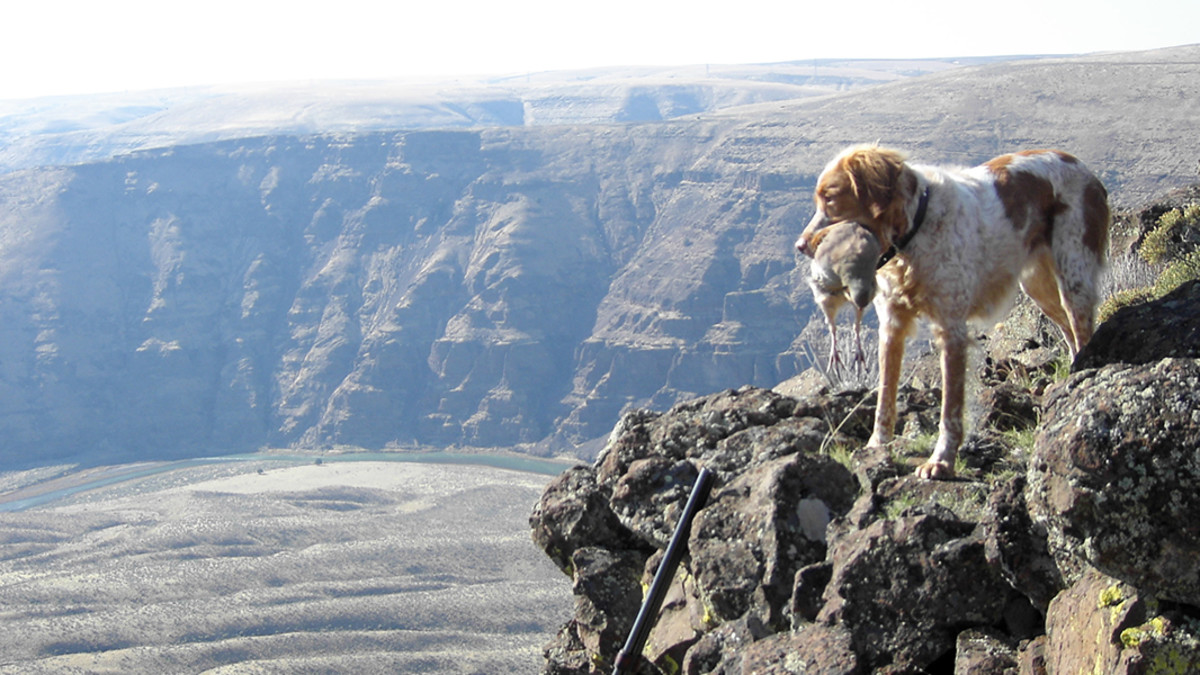
You made the shot, and the bird crumpled and fell toward the ground. If you’re lucky, recovery will be as simple as walking over there and picking it up. Often, though, things are much more tricky than that.
Recovery can be hard, time-consuming work when hunting in brushy or swampy areas where downed small game can be hidden from sight. Here are some tips to help you recover more game and bring more meat to the table.
If you connect on a shot, carefully mark the location of your downed quarry before taking a second shot at another bird or animal. Getting doubles is great, but don’t do it at the expense of losing an animal.
Before moving from your shooting position, make sure you’ve memorized the location where you think your quarry fell. Also mark the place where you were standing when you shot. If you’ve got a buddy with you, have him stand in the place where you shot so that he can guide you to your mark. Or else stay in your shooting position and guide your buddy to the mark.
Being off in your search by just 10 feet can make a huge difference, so precision really matters here. If by chance you don’t recover your game immediately, go back to your original shooting location and replay the shot in your head. This often helps to adjust your area searching to come up with the animal.
Keep the concept of inertia in your head. If you saw a speeding mallard crumple from a shot as he flew past a snag on an old cottonwood tree, remember that his body probably didn’t hit the ground until he was 10 or 20 yards past that point.
Look for blood. Small animals bleed just like big ones, and following a micro blood trail can lead to meat.
Look for feathers. A cluster of feathers that appear to have drifted to the ground can tell you where a bird was hit in the air. Feathers that are matted and plastered to the forest floor can tell you where a bird hit the ground. Lots of feathers and no bird might mean that the bird walked away. If so, keep searching.
When hunting furred game, a tuft of fur usually pinpoints the location where the animal was when it was hit. look for more tufts of fur on nearby brush to show which direction it traveled. Use ever-widening circles to search. If the bird or rabbit isn’t exactly where you though it would be, mark that spot with your hat, and walk circles until you find it. The central location of your hat keeps you focused on the right area and you’re less likely to wander off course.
Be ready for follow-up shots. Especially with waterfowl, whose feathers deflect much of the energy from shotgun pellets. Keep your gun loaded until you have your hand on the the quarry. Many wounded ducks have escaped in the time that it takes a hunter to walk to his blind to retrieve more shells.
Dead animals don’t always fall from the sky directly to the ground. Many birds and especially squirrels often get hung up in the notches and forks of tree limbs. When the search for a downed animal is getting tough, remember to look up; what you’re looking for might be dangling right above your head.
Get a dog. Even a poorly trained dog has better sensory perception than you. If you take the time to train your dog right, nearly all your game will be recovered.





Conversation